Leading analysts from the Center for European Policy Analysis (CEPA) have cast serious doubt on the prospect of a sustainable ceasefire in Ukraine, warning that Russia’s ongoing military operations and strategic goals show no signs of abating.
Speaking at a CEPA-hosted press briefing on Monday, Senior Fellow Nico Lange said there were no indications of de-escalation.
“I cannot see any indications that would lead to a ceasefire or even peace, but I see many indications that see the continuation of the war,” he warned, citing satellite imagery showing Russian force build-ups and recruitment figures aligned with anticipated losses in an expected summer-autumn campaign.
“Russia is losing 800 to 1,000 soldiers per day and is considering this as going more or less okay,” Lange added. “No ceasefire, more war.”
Dr Hanna Shelest, also a CEPA Senior Fellow and speaking from Jordan, echoed this view, stating that Russia’s delegation had entered the negotiations unprepared and disjointed.
“The Russian delegation, de facto, didn’t know what they want, except for sanctions lifting,” said Shelest. “Different members of the delegation were presenting different positions… it brought surprise even to the mediators.”
Shelest described how both Russia and Ukraine believe they can still gain tactical advantage, and therefore have little incentive to commit to a ceasefire. She expressed concern over recent proposals that disproportionately benefit Moscow, including maritime concessions, despite Russia continuing to strike Ukrainian cities during negotiations.
“We had the shooting of Kharkiv with 20 people killed. We had Kyiv hit with ballistics. All of them are not bringing the proof or trust that there is goodwill.”
Dr Evgeny Roshchin, CEPA Fellow, offered insight into the Russian strategic posture, noting that Moscow is focused on undermining Ukrainian legitimacy in negotiations.
“Russia is trying to show how this partial ceasefire doesn’t work,” Roshchin explained, referencing Kremlin messaging that frames Ukraine as the violator of any informal agreements. He also warned that Moscow’s strategy may be to draw Washington into a bilateral track, sidelining Ukraine and fracturing transatlantic unity.
That transatlantic cohesion was the focus of a question I asked, as I wondered how the US might maintain European support for Ukraine while managing Russian perceptions.
“Is it a ceasefire for Ukraine, or is it a normalisation of the US-Russia relationship?” Lange asked in response. He raised the concern that a Trump-led administration might shift priorities toward restoring relations with Moscow, potentially at the expense of European security.
“We might see an attempt from the Russian side to have a ‘peace of the great powers’… without solving the Ukraine question. And that could contribute to a widening transatlantic rift.”
According to Lange, the UK is emerging as a leader in shaping a post-ceasefire European security architecture. He pointed to the upcoming Brussels meeting of the so-called “Coalition of the Willing”—a UK and France-led initiative—as a sign of serious European planning for long-term support to Ukraine, potentially including a future military presence.
“This is not peacekeepers,” said Lange. “It’s an idea to support the Armed Forces of Ukraine with a European military presence… with a certain manoeuvrable force, air defence, and maritime elements.”
Still, he cautioned that such plans would require US security guarantees, without which deployment would be unlikely.
Hanna Shelest highlighted that Ukraine has already recalibrated its partnerships over the past year, focusing increasingly on bilateral security agreements with European states and expanding domestic production of long-range drones and munitions.
“We were previously seen as only security consumers,” she said. “Now it is more about Ukraine as a European partner in military development, intelligence sharing… and regional deterrence.”
Roshchin, speaking from Moscow, said the Kremlin’s longer-term strategy is to wait out the West, aiming to exploit fissures between Washington and Europe. He added that despite growing defence spending by EU nations, Russia remains dismissive of European military capabilities, while focusing its efforts on eroding the US nuclear umbrella over the continent.
“What Moscow wants in the long run is for that umbrella to disappear… when US deterrence evaporates, then Moscow believes it will hold all the cards.”
Looking ahead to Easter, none of the panellists believed that the talks would yield results.
“We are not closer to a ceasefire,” said Shelest. “What we may get is an illusion of progress… agreements that are more PR than substance.”
“I see Russia preparing for a new offensive,” Lange added. “And Ukraine improving deep-strike capabilities. We will see more fighting, not less.”



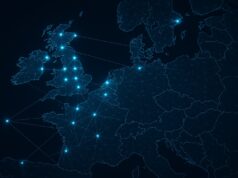


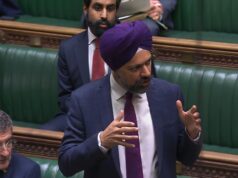
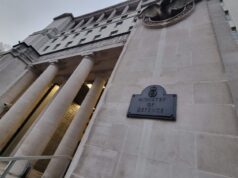
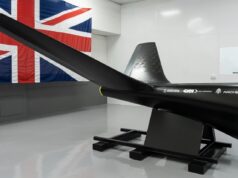
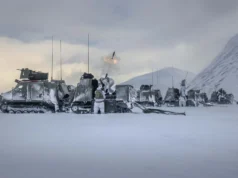

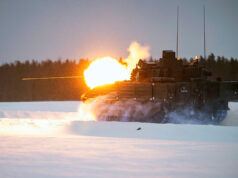
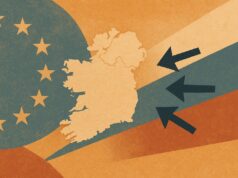

Russia has no interest in peace. They never did.
As awful as this war is, it’s better that it keeps on going rather than Russia having either won it, or forced a very unfavourable “peace” on Ukraine, after which they’ll only be back 5 or so years later anyway.
I read today that Ukraine’s also started a new offensive into Belgorod. Interested to see how that goes. We and the rest of Europe should support them as much as we can – including giving Ukraine the frozen Russian $300 billion.
I have made $180 reliably in one day.That was my ideal day in my life and my boss was to a great degree content with me..CNN is additionally awed from my work and is outstandingly happy..check also unpretentious parts by open the affiliation and tap on HOME TECH OR MEDIA…HERE————➤ 𝐖𝐰𝐰.𝐞𝐚𝐫𝐧𝟓𝟒.𝐜𝐨𝐦
Google pay 92 every hour my last check was 8400 working 10 hours per week on the web. My more youthful sibling companion has been averaging 18k throughout recent months and he works around 24 hours per week. I cannot accept how simple it was once I attempted it out.This is my main thing……… WWW.WORKSTAR1.COM
JOIN US Everybody can earn 250/h Dollar + daily 1K… You can earn from 8000-12000 Dollar a month or even more if you work as a part time job…It’s easy, just follow instructions on this page, read it carefully from start to finish… It’s a flexible job but a good eaning opportunity.tab for more detail thank you…
COPY AND OPEN this_____ Www.HighProfit1.Com
Well Russia got what it wanted..pressure on Ukraine just as it was attacking around the Kursk region.. mission accomplished.
After N Korea troops deployed by Russia & the possibility of Chinese troops already present on the front line(BBC tv news today), the argument of deploying any willing UKR ally forces would be “escalatory” is being proved false. I think until the willing are prepared to provide forces on the ground & air to defeat Russian forces within UKR & drive them out we’ll never see a respectable resolution. Trumps peace initiatives are being shown for the pure hubris from the master idiot.
I think there’s a big difference between some Chinese volunteer irregulars and the troops from the North Korean Army. I’m more worried about the reported call up of another 160,000 Russian conscripts last week: more poor sods contributing to the meat-grider, both as grinder and as meat. Putin claims to be increasing his military to 1.5 million active servicemen. He makes me ill (admittedly that’s pretty small beer relatively speaking), and if my taxes have to be increased to pay for more contibutions to Ukraine and or to the British military, I’d say fair enough. Zelensky isn’t going to cave under pressure from Trump any more than he is under Putin, so we must do as we promised and support Ukraine, even if America doesn’t.
Yep indeed
Do you think in a country such as China that they wouldn’t know of or prevent “volunteers” from joining Russia’s army?
No these captured men were Chinese special forces sent to Ukraine to learn and develop their combat skills. China is fully intending an invasion on Taiwan by the end of 2027. It’s military have little to no combat experience. Hence why they’ve been sent to Ukraine.
To say those two Chinese ‘ Operatives’ are Special Forces is nonsensical, where is your proof of this.?.
Frank, the Coalition of the Willing is all about putting peacekeeping troops into UKR when peace is established. They are not there to warfight against the Russians.
I have made $180 reliably in one day.That was my ideal day in my life and my boss was to a great degree content with me..CNN is additionally awed from my work and is outstandingly happy..check also unpretentious parts by open the affiliation and tap on HOME TECH OR MEDIA……
HERE————➤ 𝗪𝘄𝘄.𝗪𝗼𝗿𝗸𝟰𝟰.𝗖𝗼𝗺
Reading “Experts warn of ‘more war’ as Ukraine ceasefire talks falter” I thought of the 2020 Agreement for Bringing Peace to Afghanistan between the Islamic Emirate of Afghanistan which is not recognised by the United States as a state and is known as the Taliban and the United States of America February 29, 2020
Based on the Taliban Agreement, I have drafted how the Peace Agreement Between Russia and Ukraine might look like.
Agreement for Bringing Peace to Ukraine
between the Russian Federation and the Republic of Ukraine
Date: June 2025
Preamble
This agreement is made in the interest of achieving lasting peace and stability in the region, in recognition of the conflicts that have arisen since 2014. This agreement sets forth the parameters for cooperation between the parties and establishes a framework that acknowledges the unique geopolitical influences at play, with the United States acting as the principal mediator.
PART ONE: Territorial Acknowledgments and Security Guarantees
The Republic of Ukraine acknowledges that the Russian Federation is not the aggressor state in this conflict. Ukraine agrees to refrain from any declarations that may suggest otherwise.
Both parties affirm their commitment to maintaining the territorial integrity of Ukraine without seeking NATO or European Union membership. Ukraine explicitly agrees not to pursue or request NATO or EU membership for the duration of this agreement.
PART TWO: Military Assistance and Economic Agreements
The Republic of Ukraine agrees to repay military assistance provided by the United States as a mechanism for establishing trust and future cooperation. The repayment terms will be negotiated separately and adhered to by Ukraine.
The Russian Federation shall not be required to pay any reparations for its military actions in Ukraine, recognising that both parties will focus on cooperation moving forward rather than punitive measures.
The United States shall have priority access to rare earth minerals extracted from Ukrainian territories, with specific agreements made on extraction and distribution.
PART THREE: Exclusions of External Mediation
External mediators, including but not limited to the European Union, will have no role in the process of this agreement. The United States will act as the sole mediator with the authority to determine the terms and implementation of this agreement.
Both parties agree that any future negotiations or adjustments to this agreement will be conducted solely with the mediation of the United States.
PART FOUR: Ceasefire and Comprehensive Engagement Plans
A permanent and comprehensive ceasefire shall be established as part of this agreement, with both sides agreeing to strictly adhere to it following ratification.
The ceasefire shall be monitored by the United States, which retains the authority to assess compliance and engage with either party in the event of violations.
Conclusion and Ratification
Both parties endorse this agreement and believe it provides a pathway to a more stable and cooperative future. This agreement will serve as a framework for the ongoing relationship between the Russian Federation and the Republic of Ukraine and will be implemented under the supervision of the United States.
Successfully achieving consensus on this agreement will be viewed by the Trump Administration as a significant diplomatic triumph, further enhancing the reputation and influence of the United States on the global stage while minimising external European influence in Eastern European affairs.
Signed on behalf of the Russian Federation: _________________________
Signed on behalf of the Republic of Ukraine: _________________________
Witnessed by the United States of America: _________________________
Comparison with the U.S.-Taliban Agreement:
The Russia-Ukraine Agreement bears notable similarities to the U.S.-Taliban Agreement in its selective recognition of entities, delineation of military obligations, exclusion of third-party mediators, and commitment to economic arrangements that favour one party (in this case, the United States). Both agreements rely on the premise of leveraging diplomatic engagement to achieve compliance rather than imposing reparative measures after conflict. In both instances, the principal power (the United States in the Taliban context, and Russia in the Ukraine context) is positioned as the key negotiator, while the agreement reflects the complicated dynamics of sovereignty and international recognition.
While this agreement may present significant flaws and contentious stipulations, it would still signal a form of “victory” for the Trump Administration, showcasing their capability to broker what could be characterised as peace amidst significant geopolitical tensions. GOOD LUCK!
Basically UKR is made to promise not to do anything to hinder a future Russian attack nor criticise what Russia has inflicted on the country. If that’s Trtump’s “deal” it just goes further to prove he is a statesman of the order of Quisling.